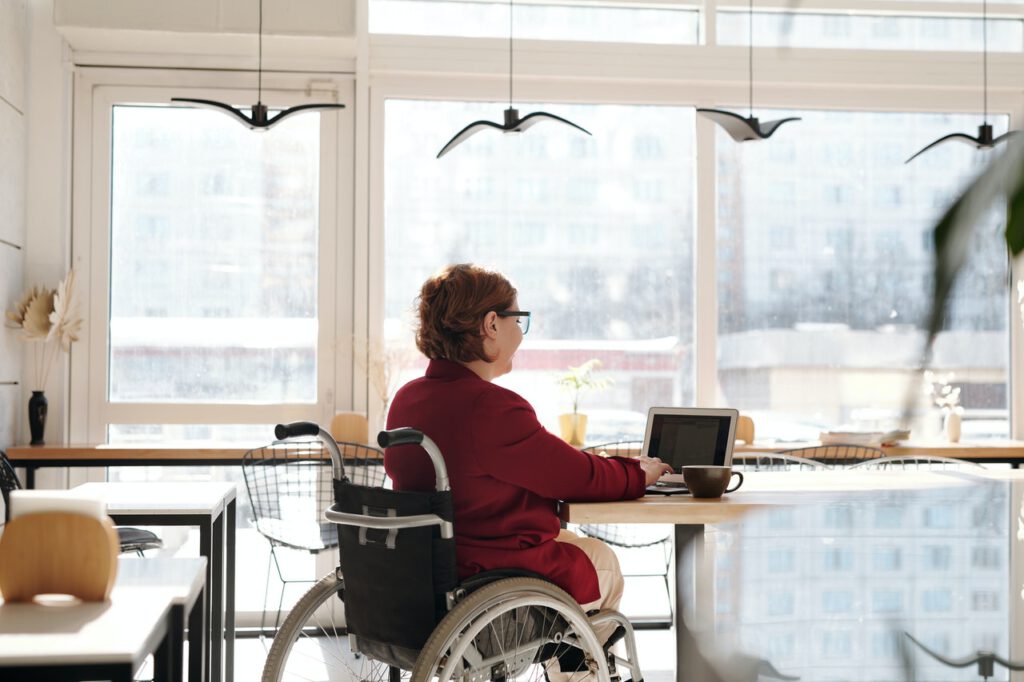Home adaptions for the less mobile

Making mobility adjustments within your home can be a daunting but necessary step towards improving the quality of life for either yourself, or of those closest to you.
The experts at money.co.uk have put together a list of different mobility aids and the considerations to take into account when making choices, as well as potential options to help fund changes.
Stairlifts
Stairlifts can be a useful way to move between floors safely and independently, but there are a few points to consider before making a purchase
- Any radiators, cupboards or other obstructions would need to be removed before the stairlift could be installed, and that could take a lot of time and money
- Curved staircases often mean the stairlift has to be custom built, adding significantly more ot the cost
- Even the best stairlifts need to be serviced. Choosing a reputable manufacturer in the first place should mean fewer operational problems. It’s worth asking about the average cost of repairs for the model you choose
- Reputable manufacturers will also provide a guarantee, but it’s a good idea to check how long that will last and what it will cover
- Also check what is included in the quoted price and what might be an added extra. And ensure you know whether it’s a new or reconditioned model
- Finally, as stairlifts are exempt from VAT, make sure it’s not included in the price
Grab rails
Grab rails fixed around the house to help with steps and general balance issues in awkward places are a great way of avoiding falls.
- They can be installed on a variety of surfaces including tile, drywall, concrete wood or stone
- For full support and stability, grab rails should be attached directly to the studs inside a wall
- They come in a variety of shapes, sizes and prices, with some starting from under £5
Ramps
Ramps can make getting in and out of a property much easier. There is a great deal of choice here, so you should be able to find something that meets your specific needs.
- It’s important to consider the size and width of your wheelchair or disability scooter in deciding how to build your ramp
- Remember that the shorter the ramp, the steeper the slope. Moving a wheelchair up a short, steep ramp is more difficult than with a long, shallow ramp, but you’re likely to be limited with the space in which you can work
- Wheelchair ramps can be made from wood, steel, concrete or aluminium and they all come at a variety of different costs
- Other things to think about include whether you want it to be permanent or portable, whether should be foldable, and if it needs to have a non-slip surface.
Walk-in showers and baths
A walk-in shower has a flat entrance rather than a step-over ledge, making it easier for people with limited mobility to walk in and out.
- There are products you can add to personalise the shower to your specific needs, such as shower seats and grab rails
- There can be a problem with water leaking on to the bathroom floor because there’s no shower tray to catch excess water. That means this might not be the right option for a small bathroom
A walk-in bath has a watertight door that opens, allowing you to step straight in and close it behind you without climbing over the side.
- Because walk-in baths are taller than they are wide, they can often take a longer time to fill and drain than regular baths, and you’ll need to stay in the tub for both the draining and filling
- Walk-in baths are not a cheap option, so it’s always wise to get a consultation first. Most companies will offer this free of charge.
Paying for adaptations
Home adaptations can be expensive and time consuming.
There are a number of ways that can be used to fund modifications, each with their own pros and cons.
Disabled facilities grants
If you or your relative is registered as disabled, it may be possible to apply for a grant from the appropriate local council to accommodate specific needs and requirements. This might include widening doorways or installing of ramps and/or stairlifts. It could cover making lighting and heating controls easier to use, and might even extend to building a downstairs bathroom.
Eligibility for this grant rests on someone in the household being disabled. They need to own or be a tenant at the property, and intend to live at the property throughout the five-year grant period.
How much the applicant receives will depend on household income and any household savings over £6,000.
Home improvement and renovation loans
If a grant is not possible, a home improvement loan is another option. These generally are available at low interest rates, so you can avoid an overwhelming upfront cost, and spread the payments out in a more manageable way.
VAT
There are tax benefits for some modifications. VAT notice 701/7 offers 0% tax on goods for those living with disabilities, as well as anyone aged 60+ on products that are designed for their own personal use. This tax relief covers such items as adjustable beds, wheelchairs, stairlifts, alarms, ramps, widening doors, lifts, braille paper and the leasing of mobility vehicles.
For more information about grants, contact the local authority for the person who needs help.
You may also find these articles helpful:
- Mobility scooters – a guide for beginners
- What to look for in mobility aids for your parent
- Helping your parent to keep the bathroom clean
Photo by Marcus Aurelius from Pexels

